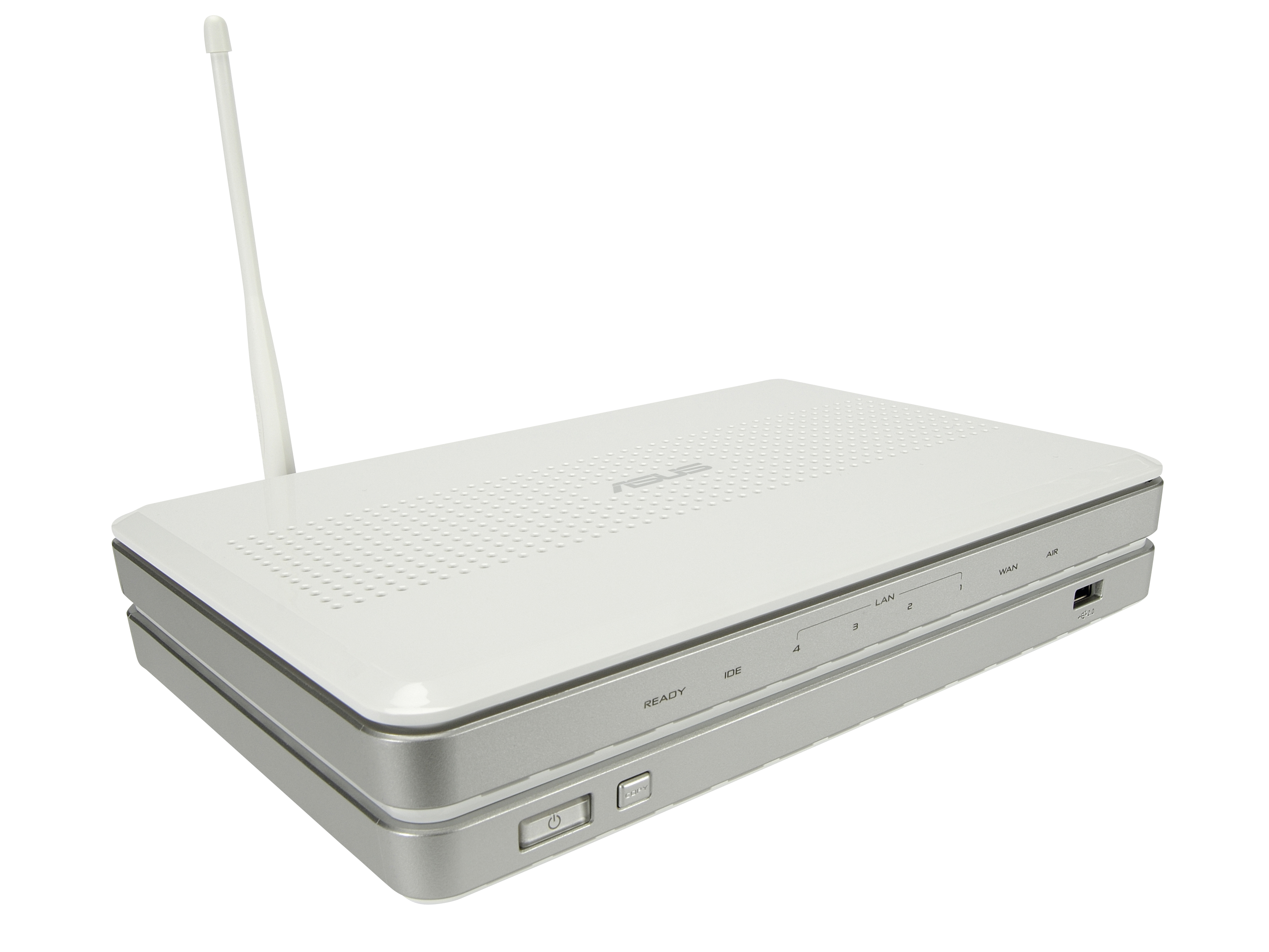TechRadar Verdict
It's well worth the asking price if you're into downloading and saving time
Pros
- +
Its a router and a NAS!
160GB of storage space
Cons
- -
Fiddly to set up
For cable users only
Not upgradeable
Why you can trust TechRadar
When is a router not a router? When it's a Network Storage Server (NAS) as well! We've seen plenty of routers before and we've seen plenty of NAS devices, but this is the first time that we've seen the two technologies married. If you think about it, then it makes perfect sense: why add two devices to your network, when you can just add one?
Thus far, most networking manufacturers have shied away from making such integrated devices. Freecom has its Storage Gateway but other than that, Buffalo Technology has probably come the closest with its range of consumer NAS boxes, but it doesn't go for the "all-in-one" option.
It has to be said that many networking companies don't often think very far out of the box, so it's hardly surprising that Asus, a giant in the Far East, has been one of the first to pull this off. After all, the company manufactures everything from Apple's laptops to PlayStations, so wedging a hard drive into a router was a baby step in comparison to some of its other endeavours.
However, the NAS capability isn't this device's killer app. No, it's the fact that it can download files while your PC is off. The WL-700gE has something we'll see a lot more of in future: the capability to ask your router to download something rather than leaving your PC on all night.
Currently in the broadband age, there are few things big enough to necessitate this, although anyone who's au fait with BitTorrent can probably see some immediate advantages. In fact, not only can you set the wizard to download standard FTP and HTTP downloads, it'll handle BitTorrent file-sharing downloads quite happily, too.
Depending on the legality of what you download, these can drip-feed many gigabytes through your connection over several days. Because the router has a fairly generous 160GB hard drive inside, there's no need to have anything else powered up. Setting the router up initially is something of a faff. You'll need to install a software utility to get the wheels in motion, and the router's supposed to self-configure using an EZ-Setup button on the back of the WL-700gE.
The idea is that the software then pairs up, but we had difficulty getting this done properly so we configured it using the browser-based client over a wireless connection. After that it's plain sailing and you can connect to the router easily as a networked drive in Windows.
There are a couple of issues we'd like to address, though. The capacity of the hard drive isn't exactly ground breaking and it's not upgradeable, either. While it's certainly intended more as a download device than a true NAS, and a larger drive would push the price up, the ability to add a bigger drive would be a real boon. Even better would be a bare chassis, to which you fit any size drive you want.
The second issue is that this router is for cable users only, so if you're on an ADSL connection, you're out of luck, unless you are one of the few people to have an Ethernet ADSL modem, with no routing functionality. It's inevitable that most of us will have a NAS-style device in our home at some point over the next few years and this is after all, exactly what Microsoft is looking at with its Home Server technology.
It's an interesting early entry into the network convergence field for Asus, but with cable broadband being small fry compared to ADSL in the UK, it lacks broad appeal. However, if you're a big downloader and have the right networking kit, £160 is a price that's well worth paying.
Tech.co.uk was the former name of TechRadar.com. Its staff were at the forefront of the digital publishing revolution, and spearheaded the move to bring consumer technology journalism to its natural home – online. Many of the current TechRadar staff started life a Tech.co.uk staff writer, covering everything from the emerging smartphone market to the evolving market of personal computers. Think of it as the building blocks of the TechRadar you love today.
